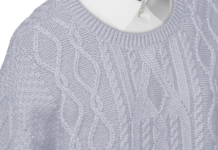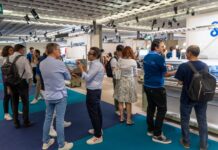Amsterdam
Anatomic Chair by Nynke Tynagel and inCC made with bespoke Byborre fabrics.
Initiated by furniture experts Object Embassy and operating on the verge of art and design, Amsterdam-based label inCC: partnered with BYBORRE and world-renowned graphic artist Nynke Tynagel to heighten their ceiling of design with the release of the ‘Anatomic Chair’ – a limited edition piece that debuted at this year’s Salone del Mobile. Reimagining the archetypical traditional beach chair, this exclusive release is limited to 600 pieces worldwide and looks to bridge the gap between art and furniture in a spectacular display of design, craftsmanship and innovation.
By opening up their ecosystem of suppliers and unparalleled knowledge of knit technology, BYBORRE gives access to the tools necessary to help Nynke and inCC:’s vision become a reality. With BYBORRE engineering the canvas, Nynke working the paintbrush and inCC: meticulously crafting the chairs, all three parties joined forces to create a unique piece that not only pushes the boundaries of creativity but is uncompromisingly functional and responsible too. A unique take on a century-old design, Nynke and inCC: provide a lens to look into the future of art and furniture, and how the two worlds can coincide together in harmony.
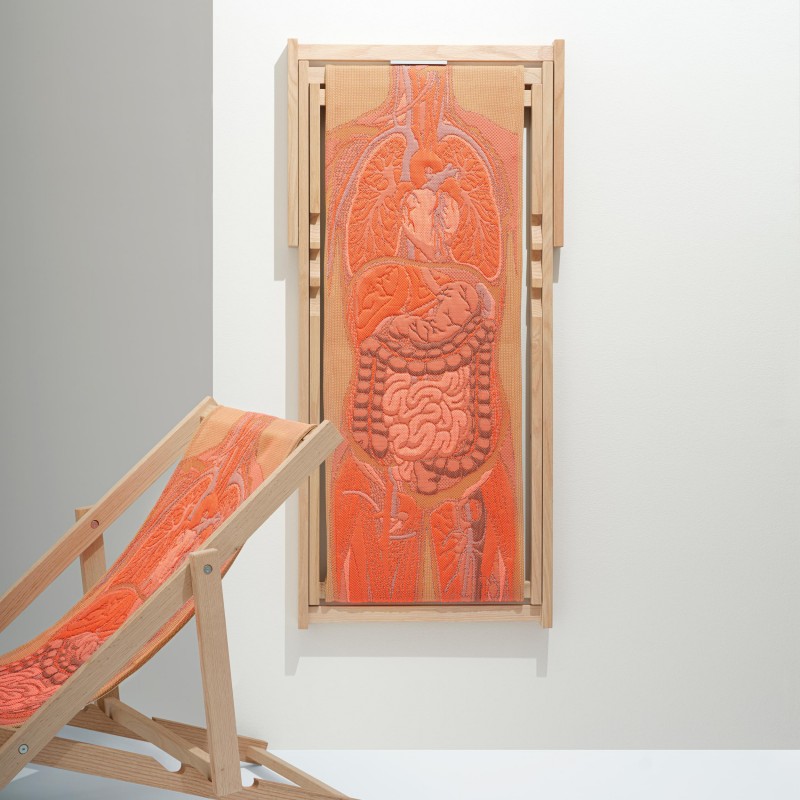
“It’s something that’s never been done before and we all thought if we could pull it off then it would be amazing. And we did pull it off, it was really a joint effort from all sides,” said Bing van der Lande, Founder of inCC:.
With work commencing mid-late December 2021, it would not be long before inCC:’s idea would start to formulate into reality. With all three parties involved being on each other’s doorsteps in Amsterdam, it was “only a matter of time” before both BYBORRE, Nynke and inCC: would come together.
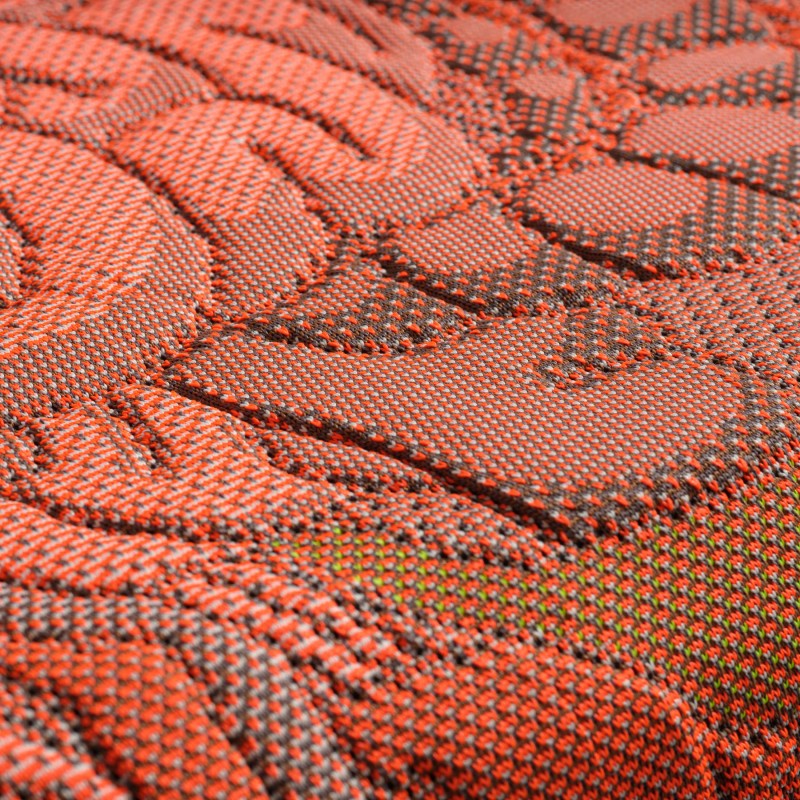
Right from the get-go, both BYBORRE and inCC: shared synergies in their thought process with the fundamentals of what was needed, such as functionality and responsibility within production. Bing van der Lande describes the importance of making conscious decisions when it comes to the footprint of their products, telling us “It is something that is rooted within the core of our company. We believe in a world where resources are scarce, we should take responsibility to make a positive impact on the world where we can.”
Even though these factors were crucial, it was almost a subconscious thought for both BYBORRE and themselves. It was the expected, not the nice-to-have, and it would be on this foundation that the project was built upon. As well as this, the yarns were incredibly traceable and transparent, having DNA tags attached to them.
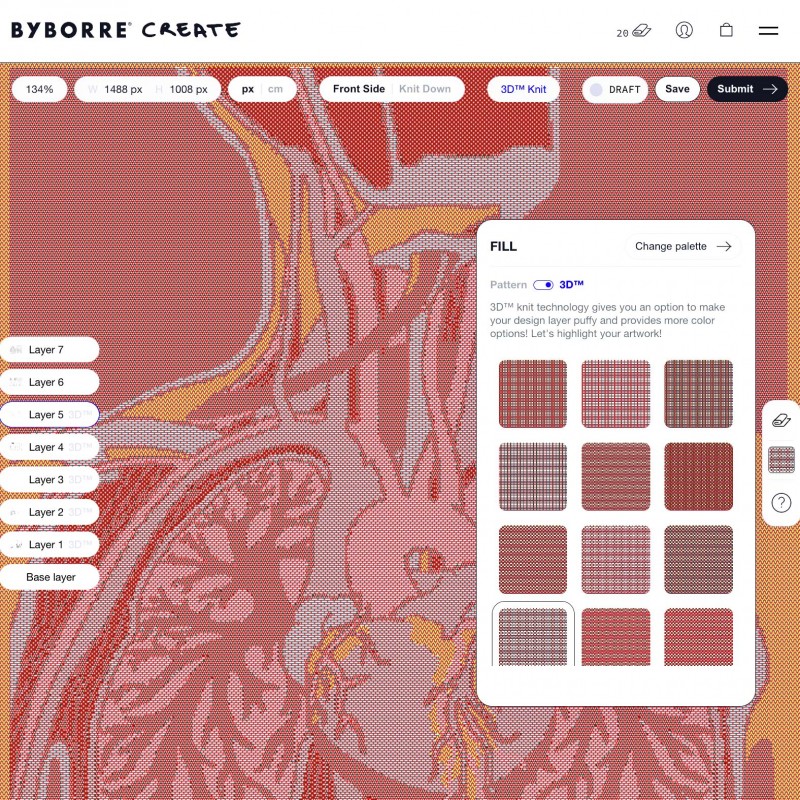
BYBORRE also understood their universe and the requirements needed for the chair to be functional, therefore the textile packages would quickly be selected based on two core components: durability and suitability for outdoor use. Bing tells us that quality was never a worry, praising BYBORRE stating that “they really care for the product, design, and the quality,” so deciding on textile packages was “very straightforward”. The textiles would be coated for outdoor use, ensuring functionality was never oversight in the process of creating the artistic piece.
Once the textile packages had been decided on, Nynke would step in and work closely with the BYBORRE creative team to conceptualise her vision. Based on High School posters of anatomy, a human body is embedded into the fabric itself where one would be lying. As a very experienced designer, Nynke would understand the limitations quickly and, being allowed complete creative freedom, would work to maximise the potential of the fabrics. Bing explains that during this process BYBORRE would help to pull everything together and make the entire process very digestible, facilitating the design stages and helping to turn their creative vision into something tactile.
Using several contrasting colours curated with BYBORRE, Nynke utilises an intricate design to push the boundaries of what originally thought was achievable, and the outcome is something truly unique. It was crucial to inCC that the artist would not be restricted within her work, telling us: “I personally believe that we shouldn’t restrict the artist, we shouldn’t be sitting in her chair and be directing her on what to do, so we gave her full creative freedom,” and alongside the BYBORRE creative team who “worked extremely hard” they made the unachievable achievable.
“To bring this much contrast, this much texture, this much 3D to on-pattern knit. I couldn’t tell you anyone else who could do it, and the beauty is also that Nynke made a great design, we made a great chair, and BYBORRE made a great fabric, however adding all these together, the value of the end product is elevated so much,” Bing van der Lande said.
Once design and textiles would be signed off, the sampling procedure was “straight forward” Bing tells us, and even going further to describe the speed of it all being “a matter of days”. With BYBORRE’s own on-site sampling lab it made the whole process extremely streamlined and made it incredibly easy to review and reiterate if needed.
Things were not without their challenges though, Bing tells us. With something so innovative and complex as this project, there were numerous obstacles, although “none that we weren’t able to overcome.” With both BYBORRE and Object Embassy being seasoned professionals in their industry, no detail would be overlooked. For instance, when the textiles were created and underwent steaming to achieve their 3D elements, some were subject to shrinking. To avoid this, things would be pushed so far that they are “even looking into the humidity in the factories where the textiles are being produced so we can ensure that the exact dimensions can be achieved”. It is these fine details that set the project apart from the rest, ensuring no stone was left unturned in the process of creating this incredibly high-quality piece of art.
“We have a vision, an idea, a design, and BYBORRE translated that to hundreds of meters of fabric. To be able to order such small quantities in such high quality for such a reasonable price is incredible. I think anyone who is doing bespoke work or pushing the boundaries of their industry could be a relevant partner for them,” Bing van der Lande added.
Bing tells us he is “Extremely happy” with the outcome, and “It is more than we wished for. It was one of those projects where everything came together and worked. It was such a great dynamic between all the parties involved.” Helping to bridge the gap between function and art, BYBORRE unlocked the true potential of this project, and with the help of an incredible artist and the synergy between all parties, this collision of art and furniture will echo in the industry as a pioneer of its time. The Anatomic Chair is available for purchase directly from inCC:.
Article republished with the kind permission of BYBORRE. Words: Natsuki Ludwig (Senior Editor at sabukaru). Campaign photography and videography: inCC:

Subscribe To Our Newsletter
Join our mailing list to receive the latest news and updates from our team.










